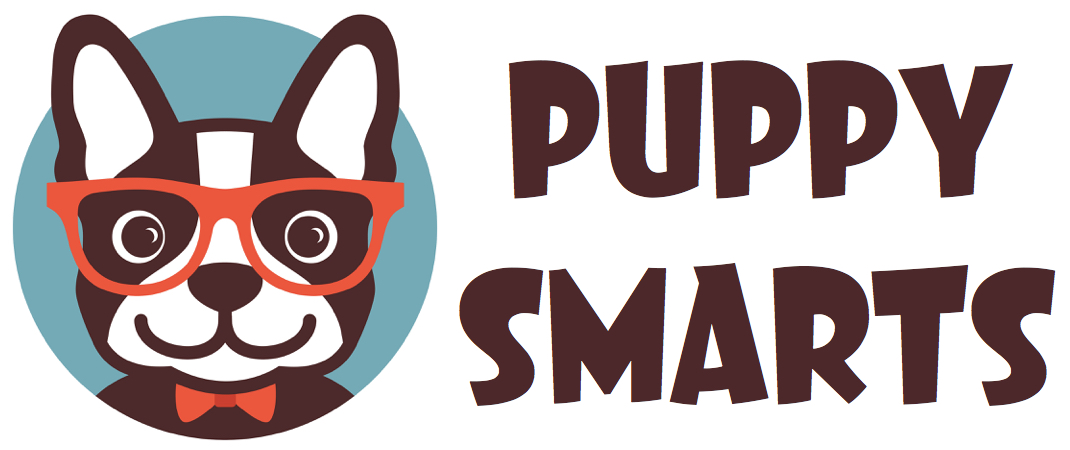Puppy Pen vs Crate: Which One Do You Need?
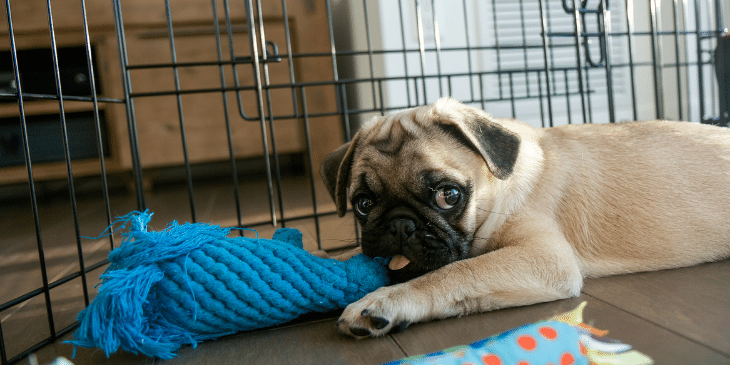
Contents
Having some sort of dog enclosure for your new puppy is essential for keeping him safe, providing comfort, and for giving you peace of mind as you go about your day. A dog crate or puppy pen can be used to prevent house training accidents and destructive behaviors during the puppy training process.
There are pros and cons to each option, so you’ll want to carefully consider what’s best for you, your puppy, and your lifestyle. In this article, we’ll outline the differences between a puppy pen vs crate and help you decide which one (or maybe both?) your dog needs.
Puppy Pen vs Crate- What’s the Difference?
Puppy pens go by a variety of names:
- Exercise pen
- X-pen
- Playpen
But, pet playpens are pretty much all the same, no matter what you call them.
Basically, a puppy pen is a portable fence that can be used indoors or out. They provide plenty of safe space for your puppy to stretch out, eat, drink, and play in. There’s even room for a pee pad during the potty training process.
Dog playpens are usually made of metal, plastic, or heavy-duty cloth. Many of them have individual panels that can be added or removed to accommodate the size of your puppy.
Dog crates, or kennels, are available in a variety of sizes and materials as well. They are generally meant to be used indoors, although you can use them on a porch or patio with supervision.
Think of your puppy’s crate as his home inside your home. It’s meant to be his safe place, where he can rest, relax, and learn to self-comfort.
Crating is ideal for potty training because crates are small and cozy like a den. Most dogs naturally won’t do their business where they sleep.
When shopping for a crate, choose one that’s just big enough for your puppy to stand up, turn around, and lay down in. If it’s too big or too small, it won’t be comfortable for your puppy and it work for crate training. A divider can be used to split a larger crate in half while your puppy is small.
Crates are also an excellent choice for short or long trips by car or plane. Even the best dog will need a crate at times and it’s a good idea to get him used to it when he’s a puppy.
So, which one do you need? A puppy playpen or dog crate? Actually, we recommend using both because they each have their pros and cons, depending on the situation. Read on to learn more!
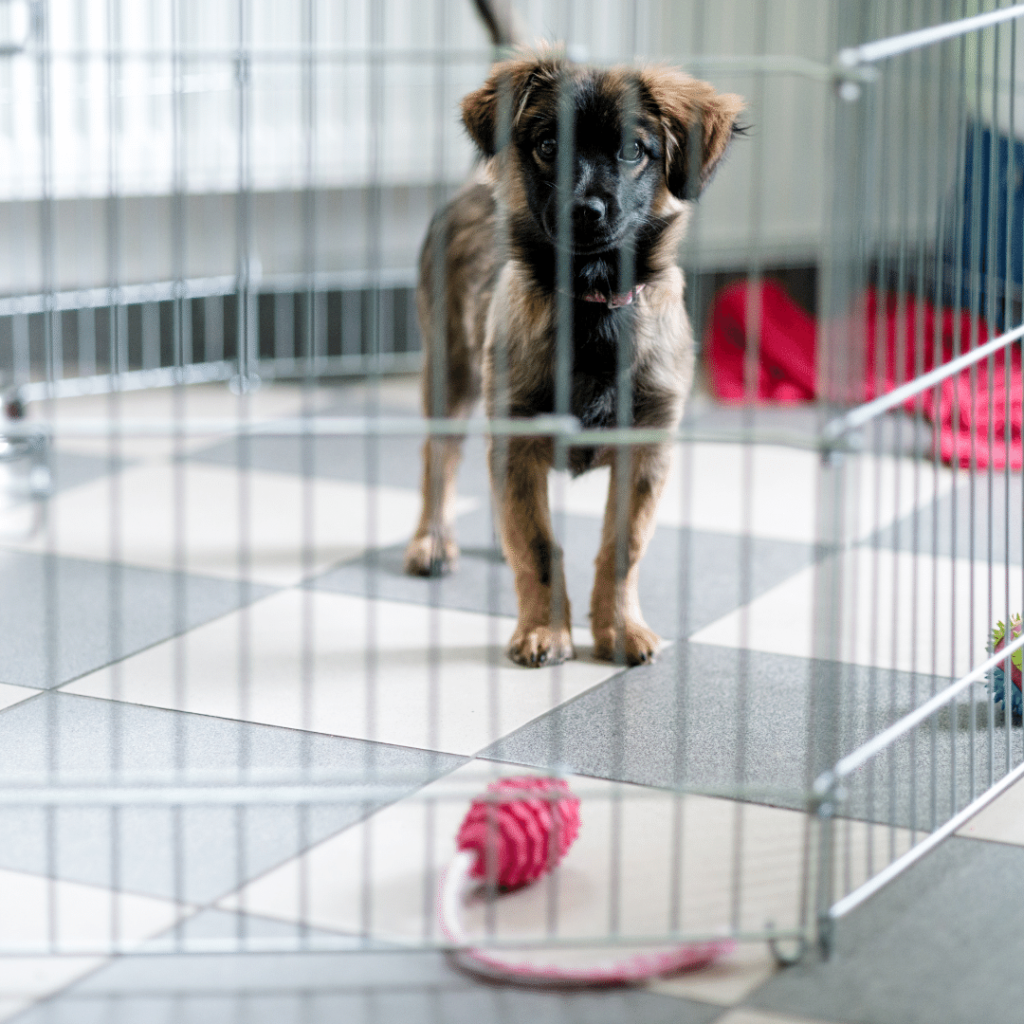
Pros and Cons of Using a Puppy Playpen for Training Your Puppy
A playpen is the ideal dog enclosure for times when you need to confine your puppy for more than just an hour or two. Puppy playpens are big enough to allow your puppy to move around, and you can put a puppy pad in there so he has somewhere to go to the bathroom while you’re gone.
Playpens can be moved from place to place without the worry of having to puppy proof an entire room. They’re great for peace of mind at home, or when your dog is a houseguest in someone else’s house.
Here’s an overview of the advantages and disadvantages of training your puppy with a playpen.
Advantages of a Playpen
- Easy to assemble.
- Size can be adjusted to grow with your puppy.
- Enough space for food and water bowls, bed, and toys to keep your pooch busy.
- Peace of mind knowing you can accomplish other tasks while your puppy is safe and secure in his playpen. This allows your puppy to be more independent, too, which is important for his self confidence.
- Playpens give puppies more room to move and have space for a puppy pad, so they’re a better choice when you have to be away for long periods of time, such as while you’re at work.
Disadvantages of a Playpen
- Too much space to be effective for potty training.
- Energetic, active, or large puppies may learn how to climb or jump out.
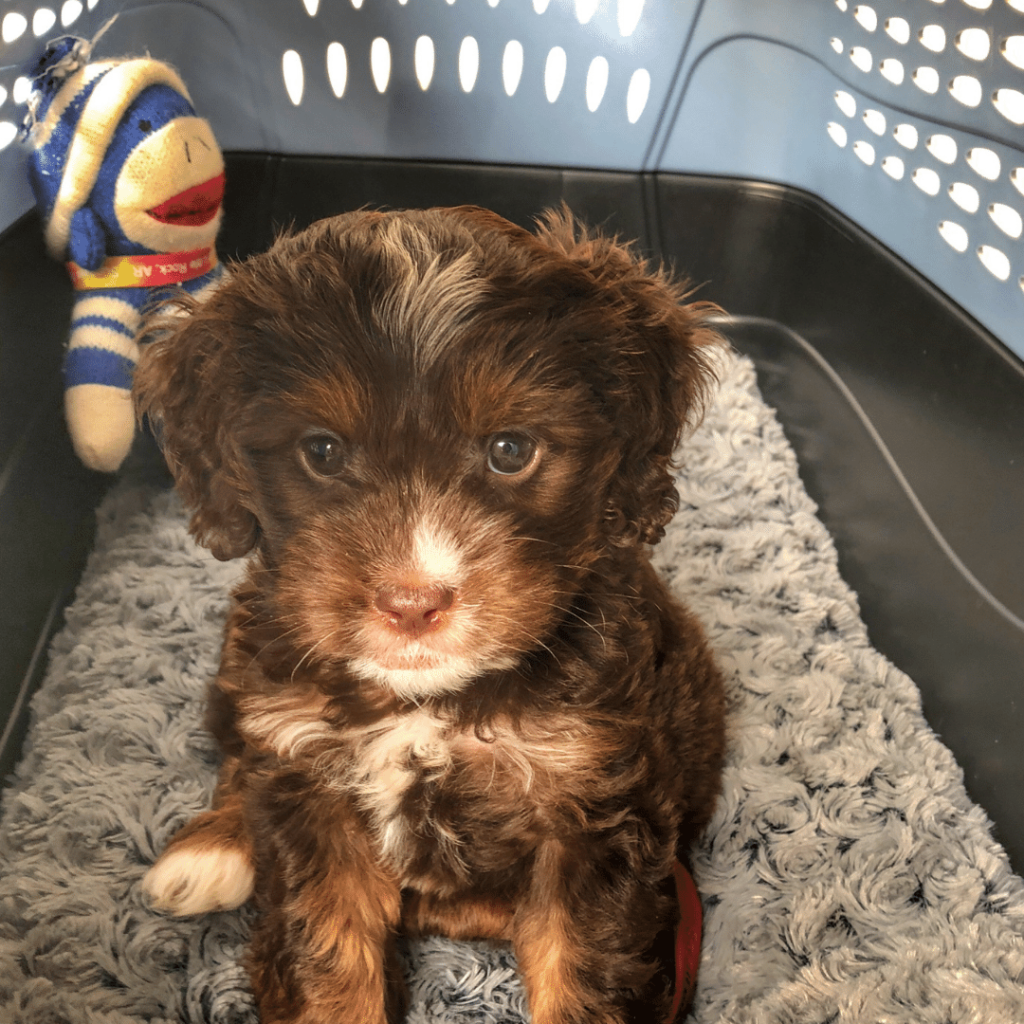
Pros and Cons Of Using a Crate for Puppy Training
A dog crate is the ideal tool for house training your puppy. Most dogs will naturally “hold it” in a small space. Just be sure to take your puppy out for a potty break every two hours, after each meal, and any time he wakes up from a nap.
Whenever you can’t be supervising your puppy during potty training, he should be in his crate. Never confine a puppy in a crate for more than two hours. Older puppies and adult dogs are usually ok in their crate for up to four hours, once they’ve been properly crate trained.
Crate training also comes in handy for traveling, trips to the vet, boarding, or during emergencies, such as if you ever need to evacuate during a storm. If you have a new dog that’s scared of you or his new surroundings, having a crate to retreat to will help him feel safe while he adjusts.
A dog who has been properly crate trained is also less likely to suffer from issues with separation anxiety later in life. The process of crate training teaches them how to self-comfort, so as long as their crate is available, they have a safe place to go, even when they’re separated from you.
Advantages of a Dog Crate
- Small, cozy space is ideal for potty training.
- Many puppies learn to think of their crate as their personal space where they can go to rest or anytime they’re anxious or overwhelmed.
- Excellent choice for travel. Crate training in advance will ensure that your doggy feels safe and comfortable in his crate for short and long trips, whether you’re visiting the vet or driving across the country.
Disadvantages of a Dog Crate
- Crate training takes time and patience. Some puppies hate the crate at first, which can be frustrating or upsetting to pet parents.
- Puppies can only be crated for short periods of time, about one hour per month of age. So, your 2-month old puppy will need a potty break every two hours. If you have to be away for longer periods, you’ll need a playpen with room for a potty area- or someone to come by and walk him.
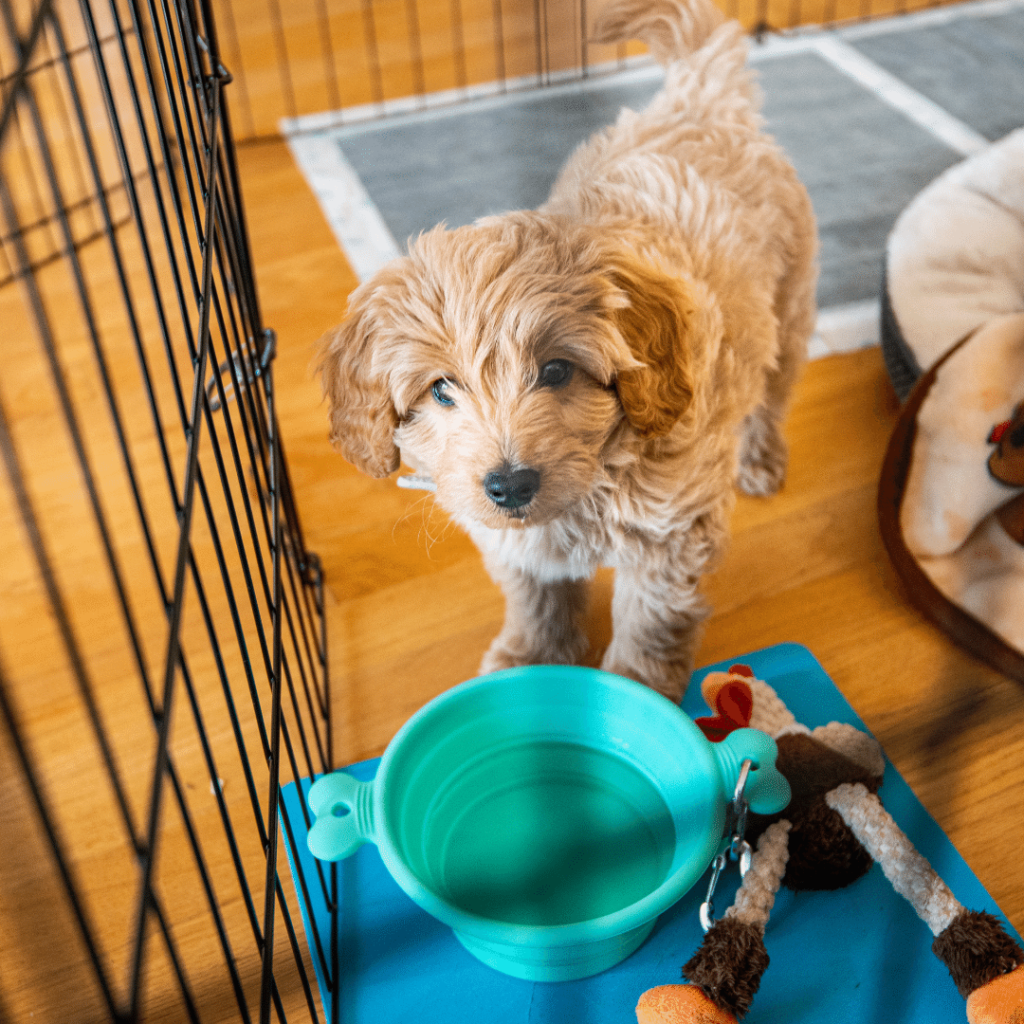
The Advantages of Incorporating Them Both Into Your Puppy Training Routine
For many dog owners, setting up a long-term confinement area that utilizes both a crate and a playpen will be the best option. That way, your puppy can have access to a potty spot, play area, food, and water in the playpen, plus a sleeping area in his crate.
When you have to be out of the house for several hours, you can allow your puppy access to both spaces. When you’re home or only leaving for an hour or two, you can crate train your puppy by confining him to his crate when you’re not watching him.
Keep in mind that potty training may take a little longer with this method than it would if you were able to crate train 24/7. But, let’s be honest, most of us have to work for a living… and sleep is nice, too!
If this sounds like the ideal solution for you, consider choosing a playpen that has removable wire panels along with a wire crate. That way, you can separate the panels and attach the front of his crate in that spot so his crate doesn’t take up space inside the playpen.
Be sure to put his puppy pad/potty area far away from his crate/sleeping area to help him understand that the two areas are separate. Providing a Kong and other interactive dog toys is a great way to prevent boredom while you’re gone.
When you choose his food and water bowls, look for spill-proof options so he doesn’t make a mess in his play area.
How to Introduce Your New Puppy to His Crate and Playpen
You want your puppy to have a positive association with his crate and playpen. It’s crucial that he learns to love this space and think of it as his own.
Here’s how to introduce your dog to his crate, playpen, or both:
- Take him for a good long walk to tire him out and give him an opportunity to potty outside. A tired puppy is much more likely to crawl up in his bed for a nice long nap, rather than bark or whine to be let out.
- Put him in the crate, playpen, or safe area with a stuffed Kong and some chew toys. Toss in a few treats for good measure.
- Walk away without fuss and leave him alone for just a few minutes while he’s distracted by the chewy, treats, and toys.
- Let him out before he gets bored or restless, but don’t make any kind of fuss when your return either. You want him to learn that your coming and going is no big deal.
- Repeat these steps several times a day, gradually increasing the time he’s in the safe area. After a day or so, start leaving the house for short periods and gradually lengthen the time he hangs out in his safe zone.
- Your puppy should be in his safe area anytime you can’t supervise him, not just when you aren’t home. It’s also a great place for him to go when your adult dog or kids need a break from the puppy, or vice versa. You’ll also find it super helpful when you have guests or service people coming and going.
- As your puppy gets older, you can make his exercise pen larger to help him transition into having access to the entire home when he’s an adult dog.
When to Stop Using an Exercise Pen or Dog Crate
Technically, your dog exercise pen can grow with your dog and you don’t ever really have to stop using it if you have the space for it. That said, most experts say it’s safe to allow your puppy access to the rest of the house when you’re away after he’s gone at least two months without any accidents in the house, destructive chewing, or other unwanted behaviors.
Most dog owners find that after they crate train their puppy, he loves sleeping in his crate. Allowing your puppy or adult dog to have access to his crate for his entire life is usually ideal.
The Take Away
You don’t have to choose one or the other. A puppy pen and a dog crate can be equally useful during the puppy training process and even into adulthood. Consider your lifestyle and how long you’ll need to confine your puppy until he’s housetrained to help you decide.
